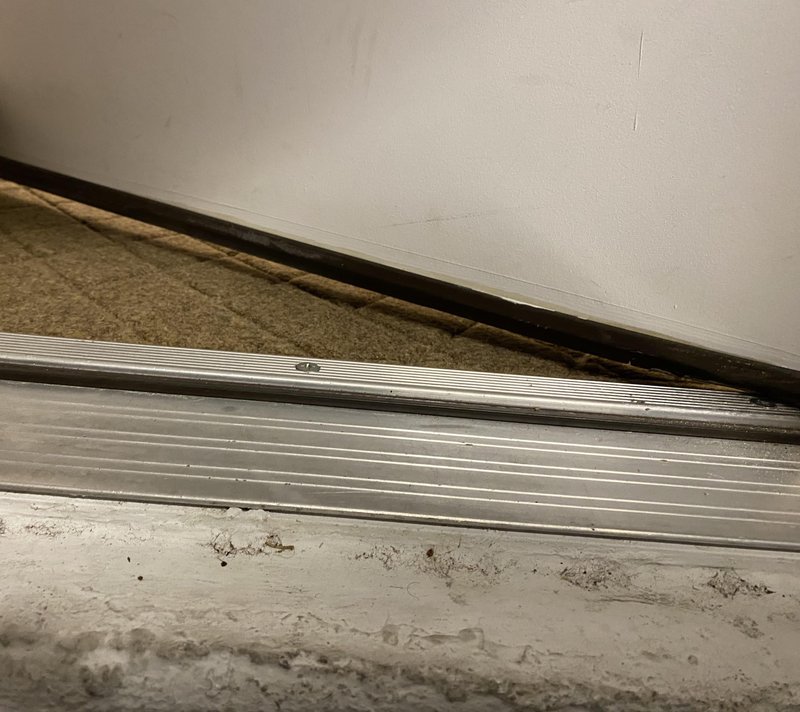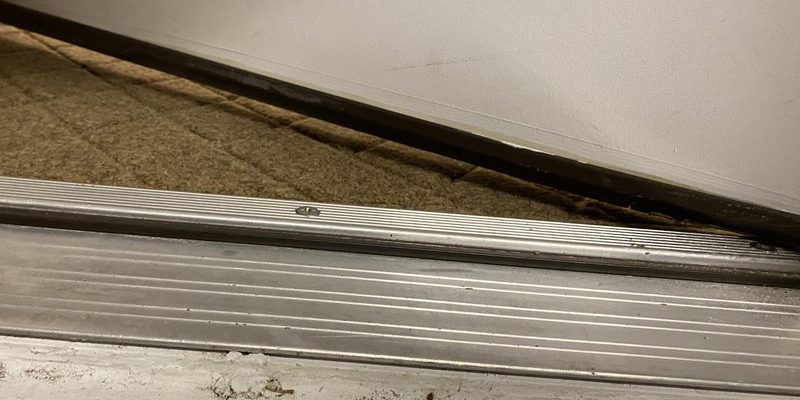
Let me explain it like this: imagine you just bought a new brand-name door sweep for your entryway. It fit perfectly at first, kind of like a good pair of shoes. But over time, things shift. The sweep drags, and your door feels heavier. Whether you installed a Frost King, M-D Building Products, or a generic weatherstrip, the problem shows up the same way: extra friction, strange noises, and a far less welcoming entry.
Here’s the thing—door sweeps and thresholds are supposed to work together like gears in a clock. If just one part is out of sync, the whole closing-and-sealing process starts to feel off. Let’s walk through why your door sweep is dragging, what’s actually happening under the surface, and how you can reset things for a smoother, quieter doorway.
What Causes a Door Sweep to Drag on the Threshold?
You might be wondering if you did something wrong, or if your door is just getting old. But honestly, there are a few common reasons why door sweeps start to drag.
First, the most likely culprit is a change in the alignment between your door and the threshold. Doors can sag as hinges loosen. It’s a slow, sneaky shift. That small drop—sometimes just a millimeter or two—can push the sweep down, making it scrape or catch.
Second, your sweep itself might be the wrong size or installed too tightly. Not all door sweeps are made equally! If you picked up a universal model and trimmed it at home, even a slightly uneven cut can cause that annoying drag. Brand-specific sweeps (like those from Pemko or National Guard) are often more tailored, but they can still be installed too low or at an odd angle.
Lastly, natural wear and tear play a part. Over time, thresholds shift (wood swells with humidity and shrinks in dry weather), or the sweep’s material wears down and loses its flexibility. If your threshold has grown a little rough or warped, even a perfect sweep will start to struggle.
How Door Sweeps and Thresholds Are Supposed to Work
Let’s break it down: a door sweep is like a soft, flexible weather seal that hugs the threshold. When installed right, it creates a gentle barrier that blocks air leaks and bugs, but barely brushes the surface below.
Normally, you want the sweep’s bottom edge to sit just close enough to the threshold to “kiss” it—not push or drag. If you close your eyes and feel with your hand, there should be a slight resistance, but no real friction.
When things are lined up, your door moves easily, seals tightly, and stays quiet. But when the sweep is too long or hangs too low, every opening feels like you’re scraping sandpaper—hard on your nerves and your hardware.
For different brands and sweep types, the actual materials vary—some use a soft rubber fin, others use brush strips or vinyl. Each is designed for a bit of give, but if you force them to handle too much pressure, they’ll bend, tear, or simply wear out faster.
Why Alignment and Installation Matter So Much
A lot of people skip the “read the instructions” step and just screw the sweep on where it looks right. I get it—who wants to fuss over a few millimeters? But here’s the honest truth: installation is everything when it comes to door sweeps.
Doors themselves aren’t always square—especially in older homes. Sometimes the top hinge loosens, the frame settles, or the floor under the threshold shifts. This means the gap at the bottom of your door might not be the same from one side to the other.
- If the sweep is set too low at one end, that side will drag every time you open the door.
- If it’s crooked, you’ll hear a scraping sound just in one spot—almost like a squeaky shopping cart wheel.
- And if you use the wrong screws or don’t secure it firmly, the sweep can “walk” its way downward over time, sagging and causing even more drag.
The key is to install the sweep so it *barely* touches the threshold—no more, no less. If you’re using a brand-specific model, it usually comes with adjustment tips (sometimes even extra screw holes for fine-tuning). Take your time: a careful install now saves you plenty of future troubleshooting.
Checking the Threshold for Problems
You might not know it, but the threshold itself can change just as much as your door. If you’ve ever spilled water or noticed condensation, you’ve seen how wood and metal can warp, rust, or bulge. Even the cleanest, most weatherproof homes deal with this.
Look for these signs:
- Is the threshold higher on one side than the other?
- Can you see cracks, gaps, or raised screw heads?
- Does it feel rough or uneven if you run your hand along the top?
If there’s significant damage or swelling, even a perfectly installed sweep will drag, because the ground it covers isn’t flat anymore. Sometimes a simple reset—tightening down loose screws or gently sanding a wooden threshold—can make a big difference. With metal thresholds, check for dents or bends that might need to be hammered flat.
Keep in mind: thresholds are like foundations. If the base isn’t right, you’ll keep having sweep troubles, no matter how many times you adjust or replace it.
How to Troubleshoot a Dragging Door Sweep
Let’s say you’ve got a sweep that’s suddenly dragging, and you want to fix it—without taking the whole door off its hinges. Here’s a step-by-step approach that usually does the trick:
- Open and close the door slowly. Listen for where it scrapes. Is it the whole sweep, or just one area?
- Check the sweep from outside and inside. Make sure no part is folded, bent, or loose.
- Look for visible wear on the threshold. Dust or black marks show where there’s too much contact.
- Try adjusting the sweep up slightly. Most models (especially brand-specific ones) let you loosen the mounting screws and slide the sweep higher. Re-tighten and test.
- Trim the sweep if needed. If you see the material is too long or wide for your door, use sharp scissors or a utility knife to carefully cut it back—just a bit at a time.
- Reset the threshold if possible. Some types let you raise or lower the entire strip with built-in adjustment screws. A small turn may fix years of dragging.
If your sweep is torn, misshapen, or just plain worn out, don’t be afraid to replace it. Most major brands offer easy-to-install replacements. And if the issue keeps coming back, check that your door’s hinges are tight, and the door sits square in the frame.
Comparing Universal and Brand-Specific Door Sweeps
Here’s a question I get a lot: Should I buy a universal door sweep, or find one that matches my door’s brand? Both have their place, but each comes with trade-offs.
- Universal sweeps fit a wide range of doors. They’re flexible, often cheaper, and easy to find. But you may need to trim or bend them to size, which can lead to uneven cuts or an imperfect fit—especially if your threshold isn’t standard height or shape.
- Brand-specific sweeps (like those made for Masonite, Therma-Tru, or Pella doors) are designed for a particular model. They usually snap right into pre-cut grooves, line up with existing screw holes, and provide a more snug, factory-like seal. They cost more, but you get less fiddling and a better fit. Less risk of dragging, too, if you follow the install instructions.
Honestly, if you’re troubleshooting a dragging door sweep and it’s a chronic problem, go with a brand-specific model. It’ll cost a bit more up front, but save you a lot of time resetting and adjusting. For quick fixes or budget projects, a universal sweep still gets the job done—just double-check your measurements before cutting.
Should You Try to Fix It or Replace the Sweep?
Sometimes, it’s tempting to just keep fiddling with an old sweep, hoping it’ll stop dragging. But if it’s been a few years, or your sweep is cracking, flattening, or letting in drafts, replacement is usually the smart move.
Here’s why: Sweeps are made of materials like vinyl, rubber, or silicone. Over time, these break down—especially with sunlight, moisture, and friction from dragging. If you’re constantly adjusting or trimming, you might be masking a deeper problem, like a warped threshold or a door that’s come out of square.
If you keep resetting the sweep every couple of months, do yourself a favor: swap it out for a new one. It’s like changing a worn-out wiper blade. Sometimes, a fresh part is the easiest fix of all.
When you replace the sweep, use the chance to check your threshold and hinges. Make any small repairs now—tighten screws, clean out debris, or sand rough patches—so the new sweep starts off with the best possible fit.
Tips for Smooth, Long-Lasting Door Sweep Performance
Once you’ve fixed the dragging issue, a little prevention goes a long way. Door sweeps don’t need much care, but taking five minutes every season will keep things gliding smoothly.
- Check the sweep and threshold often. Open and close the door a few times. Listen for changes—scrapes, squeaks, or new resistance.
- Clean the threshold regularly. Dirt and grit can build up fast, especially by outside doors. A quick sweep with a hand broom or a soft cloth helps prevent wear.
- Inspect hinges and door alignment. Loose screws or a sagging door cause most sweep problems. Tighten any wobbly parts before the sweep starts to drag.
- Replace worn sweeps quickly. As soon as you see cracks or feel a rough edge, swap it for a new one. Don’t wait for a full-on door jam.
Remember, a door sweep is a simple fix with a big payoff—less dust, fewer bugs, lower energy bills, and (best of all) a door that opens like it’s supposed to.
Bringing It All Together: No More Dragging Door Sweeps
A dragging door sweep can turn something simple—opening your front door—into a daily hassle. But honestly, it’s not a problem you have to live with. Most times, the fix is a mix of smart troubleshooting and a bit of attention to alignment.
Whether your door uses a universal sweep from the hardware store or a brand-specific part, the key is making sure that everything lines up, stays clean, and has just the right amount of contact. Check your threshold, reset as needed, and swap out old sweeps when they wear down. With a few easy steps, you’ll have a door that swings open smooth and seals tight, every time.
